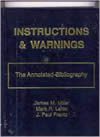John A. Harris, is Principal of Landscape Economics, LLC, President of Earth Advisors, Inc., and a LANDSCAPE ECONOMIST who has worked in the Arboriculture, Forestry, landscape, and horticultural fields for over 40 years. Mr. Harris has provided reputable consulting, education, and project management services for projects across the United States and internationally, in both temperate and tropical ecosystems.
Areas of Expertise include:
- Landscape and Tree Risk Assessments
- Landscape, Tree, Urban Forest, Nursery Plant Value Appraisals
- Landscape, Tree, Urban Forest, Nursery Plant Damage Appraisals
- Damage Assessments, Claims, and Recovery Consulting
- Arboriculture Industry Standards and Standard Practices
- Landscape, Arboriculture, Forestry, Environmental Project Management
- Utility Line Clearance Industry Standards and Standard Practices, Electrocution
- Landscape Industry Standards and Standard Practices- Design, installation, maintenance
- Personal Injury and Wrongful Death involving tree or landscape issues
- Municipal Tree Inventory and Management Plans
- Duty of Care and Negligence in Tree and Landscape Maintenance
- Forestry and Forest Resources Management
- Grounds Maintenance Practices
- Arboriculture and Arborist Practices
By: John Harris
The number of storms in recent years increases the need for better tree and landscape decisions for property owners. Research regarding landscape damages for different storm intensities, what plants get knocked down by winds more often, and priorities for landscape restoration have been intensified by many southern state universities' forestry and horticultural departments.
By: John Harris
Trees and landscapes have been valued since humans were given gardens for food and enjoyment. Once people determined how to harvest seeds, how to plant gardens and landscapes, and how to relocate trees and plants, then decisions about what to use and what not to use began to set values for plants. It is this author's opinion that these practices logically date back to the beginning of history.
By: John Harris
The value of a tree can only be determined if we agree. Any value given, whether by a layperson or a professional, is real when another person involved in the process agrees to that value. The value used in the final decision can also be a different value from the one determined by the experts who worked on it (especially when the experts worked on different sides of a valuation case).









